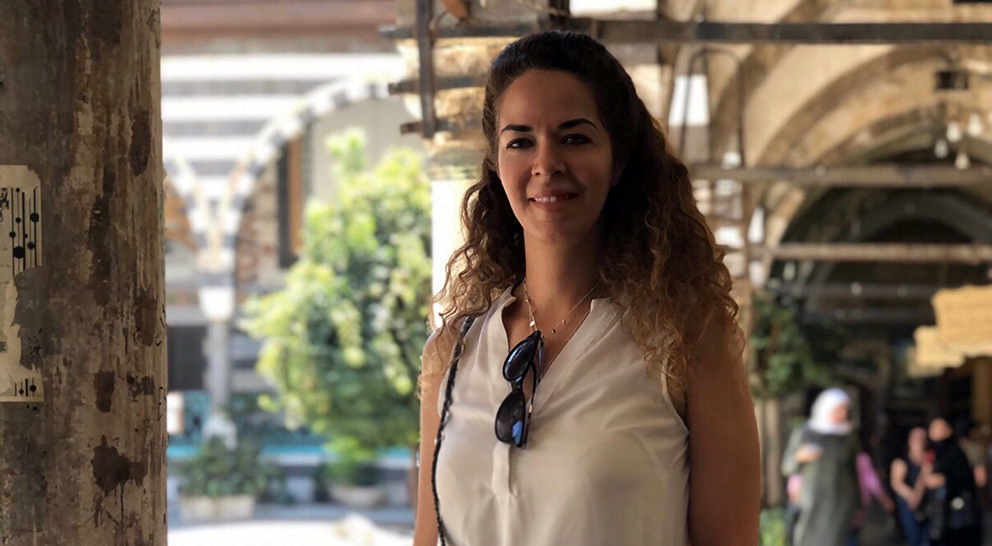You have more than two decades experience in producing children book. Why did you choose children?
Initially, I was looking for a field to volunteer during my studies to start building the necessary practical experience for post-graduation. So, I volunteered in several centers and schools as part of artistic and educational activities related to the child, and with time I found that the child is a raw material for building societies, as it develops very quickly and the results are tangible, as it is an impressive human and cognitive experience.
Everything that can be indoctrinated to the child in terms of information and experiences can be stored and shown in later stages, where there are no limits to knowledgeIt can be presented to children at early childhood ages. Hence, I found my passion is to follow the process of developing children’s cognition and development their senses and prepare them to go out to face the world.
You started writing while you were living in Damascus and then you moved abroad. Did this change play an influential role in the materials you present with the change in environment in terms of capabilities, resources, or something else?
Certainly, every experience that passes in the life of the writer is material upon which they can use to develop stories, whether voluntarily or unconsciously, but what really differed for me was the topics I was talking about, as it never occurred to me that I would be speaking about war and displacement. In one of my books, I was dealing with life topics related to the family and the surrounding milieu. But the change after leaving Damascus was the topics I covered, which were related to war, orphanhood and its repercussions.

Making a children’s book is a collaborative work between the writer, the illustrator and the publisher, what are the criteria that you look for in your business partners?
I always look forward to the studied artistic dimension in presenting the book and dealing with the text, with a full understanding of its dimensions and ideas. Also, between the lines, I present my ideas in a symbolic way, which also gives the painter a space of freedom to be creative with drawing. I also focus a lot on the target audience of the book. The book is not limited to the idea of only the text. The pictures accompanying the drawings must be in line with the importance of the text and it may cause the book to fail or succeed.
There are other factors, such as producing the book, printing it, the graphics and fonts used, all of which contribute to presenting the book in the image.
I am here presenting art, not ideas only, and addressing adults before children, and an integrated work must be presented through full collaboration between the writer, the illustrator and the publishing house.
From your experience, did you find that writing for children in different age groups presents different challenges? How is that?
Surely! Each age group has a completely different style of presenting ideas and presenting information. As a writer, when I address children with a specific segment, I must be familiar with the psychological, emotional and physiological characteristics of that stage. It is not enough for me to be a writer. I must be somewhat of a psychologist, as they differ in ideas, drawings, and colours as well, and the most difficult stage is the early childhood stage from 3 to 6 years. Here, the child receives all the information that I show him, whether true or false, and it begins to form his ideas based on the ideas he is exposed to. That is a great responsibility, as writers, we contribute to the psychological and emotional construction of future generations.
Every experience that passes in the life of the writer is material upon which they can use to develop stories.
Some of your books dealt with the issues of war and asylum. Some of it dealt with situations that different children might face. How do you derive inspiration to address specific themes and messages in your writing?
The effects and repercussions of the war, which my children and I lived a part of, drew my attention to the seriousness of its effects on children and adults as well. The stories I heard and witnessed about displaced and damaged families, demolished homes, lack of education and resources and all the scourges of war, prompted me to always think that children are the main victims. Few writers in the Arab world deal with these topics in children’s books, as these topics are not desired by publishers. However, we should not exclude children affected by wars, as a large percentage of the world’s children are exposed to wars and their horrors.

Your latest book “My Family is the World” deals with the story of an orphan child; It is a topic that some may see as controversial. What is the importance of exposing this top despite the opposition of some to discuss such a topic?
In my latest book, I presented the concept of an orphan child who has lost his parents and who lives in an orphanage or shelter, which is the previous stage before getting adopted.
Through my book, I wanted to give a positive view to the orphan child and urge him to cling to hope for the future and develop himself through education to realise his dreams and get a better future, to ease his feelings of isolation or loneliness and despair.
In addition to that, I directed this book to the adults to remember this child and search for solutions to this important issue, whether by adoption or otherwise. Our societies still haven’t found the right formula to contain these kids.

Following the previous question and with the child’s need for awareness and knowledge in these subjects, how do you succeed in delivering your message with each book?
I believe that the secret of success lies here in the interaction of parents and their acceptance of the ideas presented and their desire to pass them on to their children. Like it or not, we cannot prevent children from being exposed to these ideas through the media and technology, and no matter how parents try to protect their children, these ideas will lead to them because they are simply from reality. Therefore, parents must be aware of the importance of presenting these ideas to their children in a positive and beneficial manner to organise the random information they receive from outside the family and the media, which will cause them questions that often remain unanswered.
Sometimes it seems that there is a fine line between directing writings to the child himself and directing writings to adults with their families. How do you maintain this balance?
Parents are often exposed to embarrassing questions from their children, and they cannot know the best way to answer them. My method of presenting ideas and texts helps parents to obtain these answers. As I mentioned, the method of presenting the book plays an important role in attracting the attention of adults as well. I target adults and children together intentionally, as parents are often the ones who choose books, and they are the ones who read them to their children.
In your opinion, is there a place for the colloquial dialect in the children’s book, or is this space limited to classical Arabic?
To preserve the classical language, we must use it in writing, but I believe that linking it with the colloquial dialects is very important so that books do not lose their relevance to our daily life. Gentle and likeable methods must be found so that the child can interact with the read book easily and not feel separated from the language of the book. Therefore, I choose words that are easy to write and close to the spoken dialect, which carry a simple and rhyming musical composition so that the child can accept them and feel their melody.
You had previously talked about the importance of cultural events that libraries might hold to enhance children’s interaction with books. In your opinion, could new technologies in media and entertainment play a similar role today? Or do libraries have a special uniqueness to play this role as a community centre?
Certainly, modern technologies have no limits, and we can make full use of them in preparing interactive activities based on books, and in short breaks that we can broadcast on the means of communication, whether acting or drawing. The cartoon production process has evolved greatly to suit the rhythm of the times.

Finally, what’s next for Rama Kanawati?
I will let inspiration and life experiences lead me to the topics I will talk about. My next book will deal with the idea of parental separation and how to prepare the child to deal with the idea. I also hope to establish my publishing house, which will adopt all the different topics of distinguished writers and illustrators. The Arab world is full of talents and new ideas, but there are not many platforms that contain these artistic energies in the Arabic language.
Interview by Jamal Aljundi

🌿



